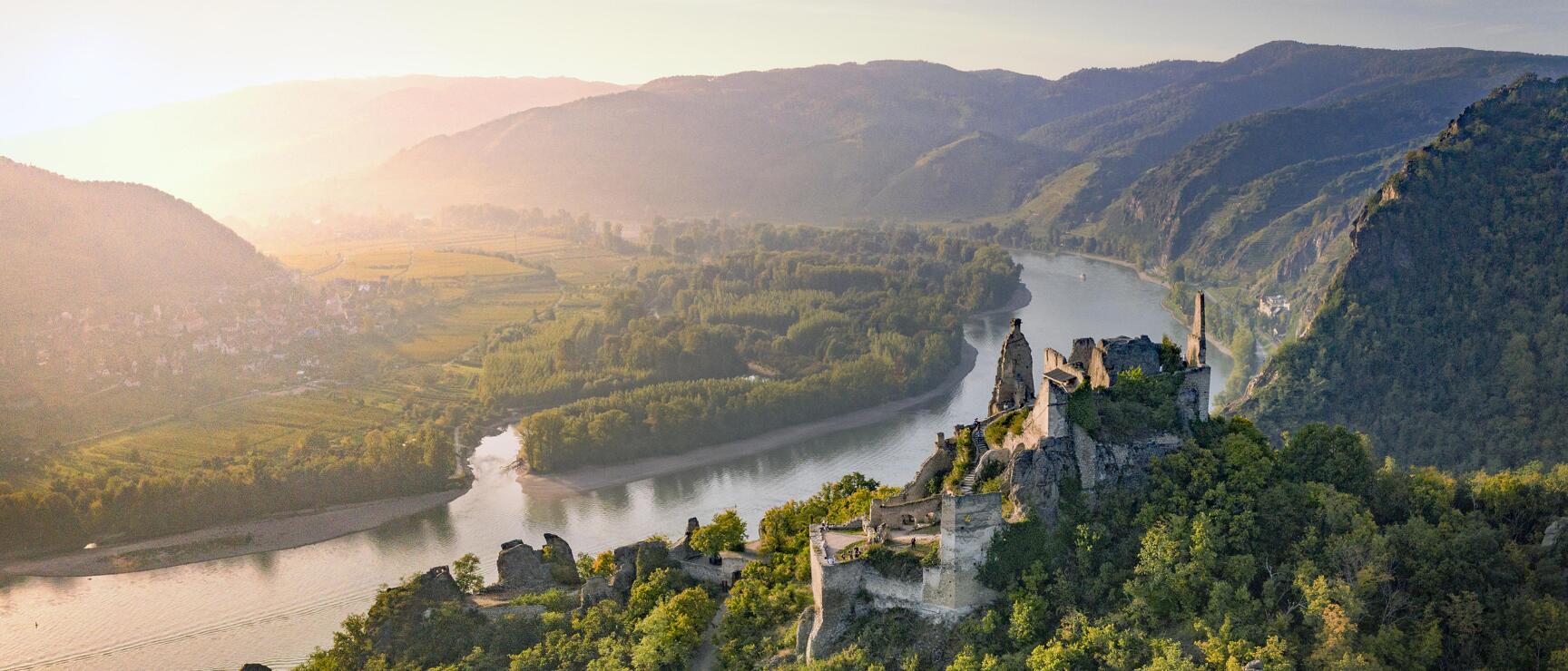
The Wachau Valley
Vineyards, apricot blossoms, and the Danube as a lifeline
In the Wachau, the Danube flows between centuries-old, steep vineyards, merging spectacular nature with history—a quality that earned it UNESCO World Heritage status. The region is known for its Wachau apricots and wine terraces that produce Riesling and Grüner Veltliner. Time seems to move more slowly here.
A visit to a traditional wine tavern with homemade specialities, excellent local wines, and views of the Danube makes for an unforgettable day. Cultural highlights like castle ruins, Melk Abbey, and villages like Dürnstein and Weißenkirchen add to the area's calm, timeless appeal.
The Wachau was declared a UNESCO World Heritage Site in 2000. Its unique cultural landscape emerged from a harmonious blend of nature and centuries of human cultivation.
Lower Austria CARD: Free admission to around 350 excursion destinations.
Meet the Wachau Valley
Top highlights
Sweet little fruit
Interesting facts about the Wachau apricot
The Wachau Apricot is so unique that it is protected as its own brand. With its plump shape, sweet, juicy taste, and distinctive aroma, it shines particularly in jams, liqueurs, and fluffy apricot dumplings. The region’s climate, soil, and centuries of cultivation contribute to its thriving here in the Wachau. The apricot blossom season is a natural spectacle: Buds open to reveal snow-white, fragrant flowers, transforming the Wachau into a sea of white.
The wine side of the Wachau valley
Ideal conditions for fine wines
With a mild climate from the nearby Danube, sunlit slopes, cool nights, and ancient rocky soils, the Wachau is perfectly suited to winemaking. White wines thrive here, particularly on hillsides like the 1000-Eimerberg and the vineyards of Domäne Wachau. The region’s Grüner Veltliners and Rieslings are highly regarded far beyond Austria. Local winemakers take particular pride in Steinfeder, Federspiel, and Smaragd—three distinguished, registered Wachau brands. For a tasting experience, visitors can sample wines at traditional wine taverns and local wineries. The Wachau Wine Autumn is especially beautiful when sunlight bathes the vineyards—and the wine in your glass—in a golden glow.
Top events
Recipes
Unique places to stay
Climate Protection Info
What is the LIFE project in the Wachau Valley?
Over 100 years ago, longitudinal embankments with towpaths were built along the Wachau, removing gravel banks and shallow shores crucial for many Danube fish species and water birds.
Through renaturation as part of the LIFE project, the river’s natural character has been revived. Fish and birds now have more habitats again, and cyclists and hikers can enjoy a more authentic Danube landscape.